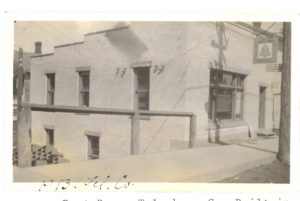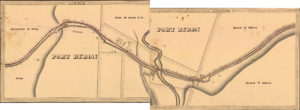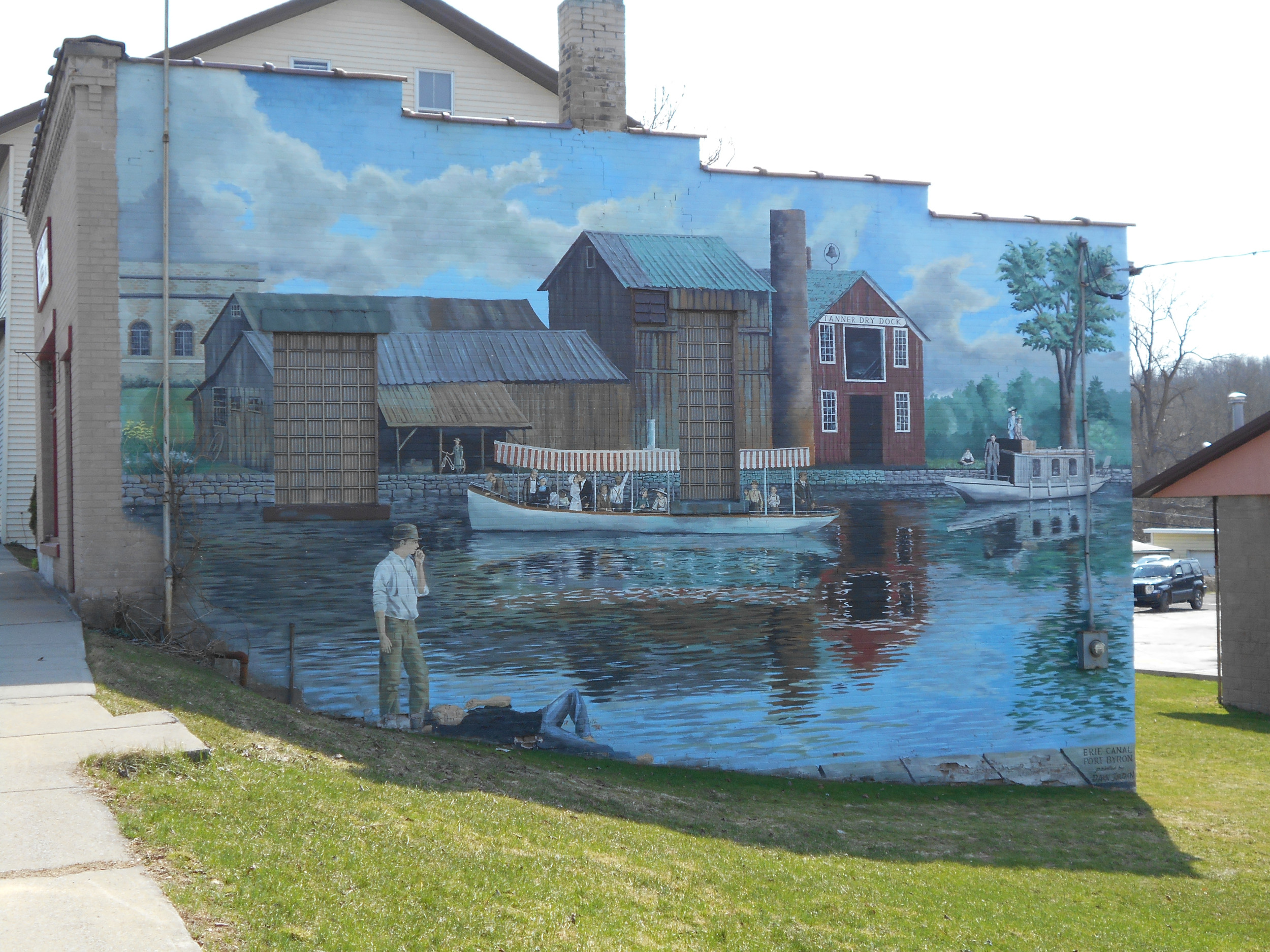When I run out of ideas for my monthly Citizen column, I turn to the old Port Byron Chronicles for some inspiration. This is where I found these two articles about the old Erie Canal. The first is an article about how the construction of the new telephone building on the corner of South Main and Rochester. It is kind of neat that Dawn Jordan’s mural of the canal sits right on this spot. It makes sense that the dock was here as this was on the main road to Auburn. The second article is about a trip in a packet boat. I have added some more details to this post.

From September 5, 1914; “In excavating for the new telephone building in the lot next to the post office Monday, part of the old canal docking was unearthed five feet under ground.The docking must have been placed prior to 1820. [This makes sense as the canal was opened for business between Rome and Montzuma in 1820] The canal ran east and west through the village which was built up along the banks. The course ran south of the present canal. The Chisholm farmhouse was an inn on its banks which sheltered the boatman and could tell many of his tales could it speak. [I have not found this house yet] The canal flowed down past the present lock then south of Rochester street and passed through the present village between the Saroney building and post office and on through the lot where Crane’s store is now located. Oscar Gutchess, OW Seymour and others remember the store conducted under the post office building. The lower door of the printing office was the main door of the store and opened onto the dock a part of which was unearthed Monday. Mr. Gutchess well remembers that a codfish was always nailed to the identical post which now supports the building and as the canal men and others would come in they would cut off a piece of the cod to eat. At that time the village of Port Byron conducted an immense business and was one of the principal stops in the canal system. Those were days of hardships and hard work but perhaps of more contentment.”

That article prompted someone to write about their memories from 64 years prior. From September 12, 1914; “The article in the Chronicle last week, about unearthing the old canal dock brings to mind the days when we used to board the packet boat there, and the people would assemble to witness the arrival and departure of the packet and to see the passengers alight and others depart. In 1850, when I was quite young, I went with my mother to Whitehall to visit relatives. [In 1850 the days of packet boat travel were almost over. When the New York Central RR consolidated many of the railroads and the company built the direct line between Syracuse and Rochester in 1853, the speed of the trains made the packet old fashion.] We went by packet to Schenectady. Miss Susan Graham of this place was one of the passengers. The boat was drawn by four horses and before we reached Schenectady more horses were added, and a brass band come on board, and I doubt if one of the great ocean steamships of the present time commands more interest when it reaches New York than those packet boats created in those days. We had our meals on the boat, and I was seated next to the captain at the table. His name was Vedder. During our first dinner the boat bumped against another boat with such force that my plate, with its contents, was turned over into my lap. I felt very much embarrassed at the catastrophe, but the captain consoled me by saying that such accidents often occurred and advised me to think no more about it. We slept in berths, which were superintended by a chambermaid. All the fat women were given lower berths and children climbed to the upper shelves. On our return trip we were aroused at midnight at a place called New London and told to prepare for a sixteen mile ride around a break in the canal. It was a chilly night in September, and the ride through tamarack swamps was anything but pleasant. We were deposited at Green Station on the railroad and came on the cars to Syracuse, where we boarded a packet again and completed the journey as we began it. [For some reason the author adds the following] The people living between this place and Montezuma used to get aboard the boat at Hovey’s Lock, which was about half way between the McLoud bridge and Montezuma. I remember one time when returning with my parents by boat from a visit to relatives to Clyde, of seeing a large bird dive down into the swamp and fly up again with a large snake in its bill. The bird perched on a stump and made a meal of its prey.” [What the author calls the Hovey’s lock was also called Sacket’s Lock, and it was Lock 61. It was located about where Route 31 crosses the Thruway east of Montezuma. This lock was eliminated when the canal was enlarged and the Seneca River Aqueduct was built.] [The name of the author is never mentioned]
![]()
![]()
